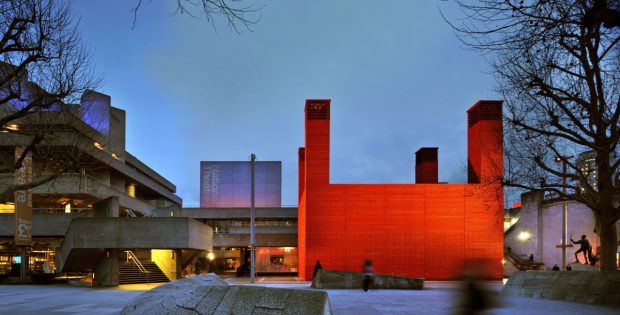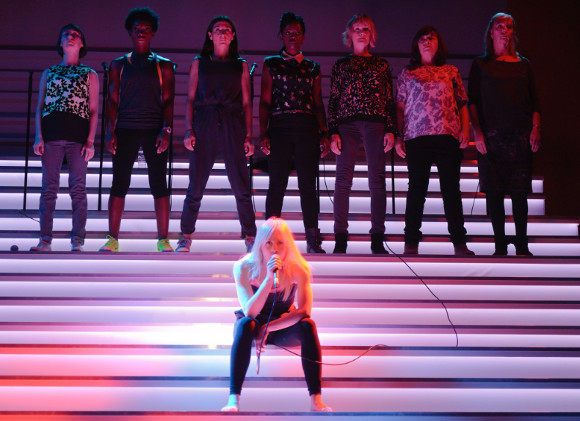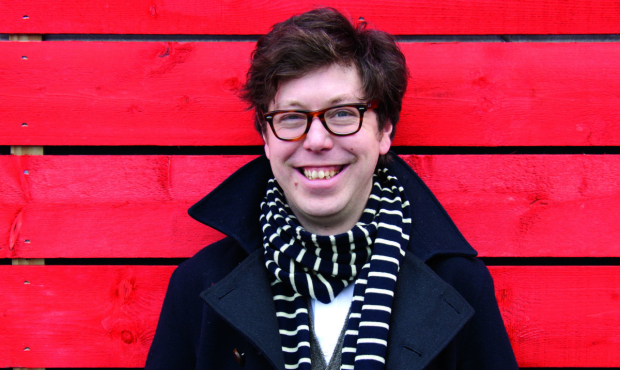Matt Trueman: The Shed has laid the blueprints for a new National Theatre

© Philip Vile
On Saturday, the National Theatre’s Temporary Theatre – let’s call it the Shed, for old times’ sake – closed its doors for the final time.
It has been a brilliant thing. Initially intended as a year-long stop-gap, while the Cottesloe transformed itself into the Dorfman, the Shed has ended up spending three years in situ – a big red box on the South Bank that has, in its architecture as well as its programming, made a big statement.
Lyn Gardner wrote recently about the need for it to spark lasting change at the National. For my money, it already has.
Let’s start with the building itself. Bung a big red box on the South Bank and, well, people notice it. More than that though, the Shed looked fun – something Denys Lasdun’s concrete jumble, for all its merits, never manages by day. And of course theatre should seem fun. It is po-facedness that keeps people away: the notion that theatre is good for you turns it into a chore. That giant celestial finger, part of the Everyman campaign, was a masterstroke too: the subject of a hundred thousand selfies.
Last week, I saw a group of schoolkids dicking about upstairs. At the National Theatre. That’s brilliant
Now I think about it, the National has become my meeting point on the South Bank. It never used to be – those wiry metal chairs and plain, square tables were awfully unenticing. The Shed shifted that, roughed it up a bit with rugs and benches, old armchairs and desks. Look around the NT by day now and it’s pretty much always full. Laptops line the long communal tables. Meetings clutter the purple-stripe poofs. The place is alive. Last week, I saw a group of schoolkids dicking about upstairs. At the National Theatre. That’s brilliant.
That roughness continued onto the stage. The Shed’s size – an intimate 250-seat thrust – allowed direct address in a way that the National’s bigger spaces sometimes struggle to do. Rob Drummond could coax us into his Bullet Catch. Andrew Scott could entrance us in Sea Wall. Rhys Ifans could conduct us in a sing-a-long of the ever-hummable ‘Boris is a cunt.’ You don’t get that in the Olivier.

© Simon Kane
Acknowledging the audience is key to a lot of contemporary theatre and, without a space to hold it, you end up cutting off a lot of good artists – artists that ought to aspire to working at the National. The Shed has held devised work too, shows that may or may not come off, and the National has made no secret of its intentions to programme artists like Alexander Zeldin and Bryony Kimmings in its main houses.
I’d argue, however, that it’s influence runs deeper than that. The Shed has been more than the National’s bit of rough. It has laid the blueprints for a new National Theatre.
Shows like Home and The World of Extreme Happiness have kickstarted the National’s drive towards genuine diversity – and diversity that goes beyond race at that. Nick Payne’s Blurred Lines made a strong feminist case that played a part in Rufus Norris‘s promise of gender equality by 2020. Graeae Theatre, Britain’s leading disabled theatre company, came to the National for the first time, as did participatory theatre, in the shape of Islington Community Theatre. Work’s already going on behind the scenes to ensure that both have an ongoing place in the programme.
The Shed has been more than the National’s bit of rough
At the same time, partly out of necessity, given the unplanned extension, it has shifted the sense of the National’s remit. As the NT’s deputy artistic directorBen Powerput it last week, the Shed has stressed "the national with a small 'n'" by hosting productions from theatres around the UK, from the Sherman Theatre’s production of Iphigenia in Splott to Bristol-based artists like the Wardrobe Theatre and Dan Canham. Equally, it’s joined up the London fringe with the subsidized sector, transferring shows from the Yard, the Park and the Orange Tree to give them a wider audience.
One of the most interesting things about the Shed programme is that it hasn’t had a single stand-out show. There’s not been a Look Back in Anger or a Three Kingdoms moment, the sort of production that seems to shift British theatre on its axis. Instead, it has been defined by a spirit of eclecticism – a sense that there’s been something for everyone. Children’s shows have sat alongside late-night gigs; the political next to the playful; amateurs with professionals. This is what a National Theatre for Everyone looks like. More, please.












